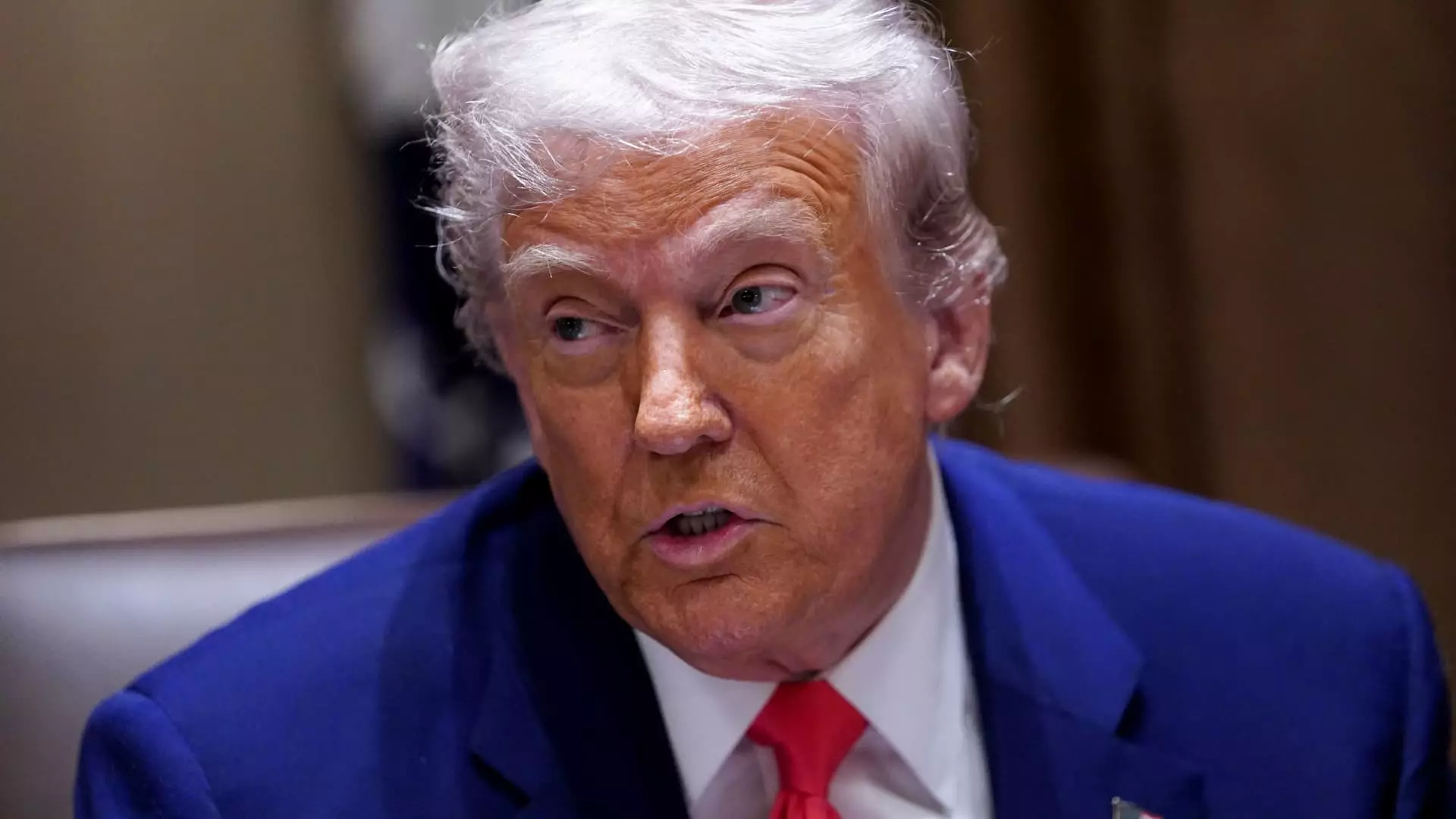The dynamics of international trade have taken a sharp turn in recent months, primarily due to President Donald Trump’s aggressive tariff policies aimed at China. As detailed by economist Erica York, the ramifications of these measures are monumental, with predictions that a 145% tariff rate effectively halts trade between two economic superpowers. This is not a mere fluctuation in trade policy; rather, it represents a seismic shift that could redefine global economic structures, pushing the U.S. toward a period of isolationist protectionism not witnessed since the 1940s. York’s assertion highlights a stark reality: when tariffs cross a certain threshold, the traditional rules of commerce become moot, and the implications for both countries could become dire.
The Market Reaction: Fear and Uncertainty
In response to the tariff escalation, market sentiments have wavered dramatically. The gains experienced on Wall Street quickly evaporated as fears of a full-blown trade war crystallized. Economists like York have indicated that although there may be some goods that face the brunt of high tariffs without alternatives, the vast majority of trade will experience upheaval. The confirmation of a 145% tariff rate by a White House official only exacerbated these fears, leading to significant downturns in equity markets. The lack of clarity on future tariff adjustments further heightens uncertainty, suggesting that political maneuvering is likely to remain a fixture of economic forecasts until a resolution is reached.
Temporary Relief: A Double-Edged Sword
Ironically, relief may come in the form of a temporary reduction in tariffs on imports from nations other than China. However, this supposedly positive move is shadowed by the ongoing punitive measures against Chinese goods, thereby perpetuating the existing tension. The 10% tariff proposed by Trump for a 90-day timeframe reflects a strategy that might placate global investors momentarily but ultimately does little to resolve the fundamental issues between the U.S. and China. Instead of fostering cooperation, these tariffs deepen divisions, painting a stark picture of a trade landscape broken by distrust and political posturing.
Impact on Economy: A Looming Financial Crisis
With the Tax Foundation estimating an increase in federal tax revenue of $171.6 billion due to the new tariff structures, Trump’s policies could be seen as a significant financial boon for the government. However, what’s lost in this revenue increase is the understanding of long-term economic health versus short-term taxation. This influx could well be the harbinger of price hikes and decreased investment, as the economic hit from these tariffs could cascade through various sectors, leading to inflation and stunted growth. Perhaps the most disconcerting prospect is that Americans could bear the brunt of these self-imposed costs—higher prices on everyday goods, reduced consumer spending power, and deteriorating international relationships could offload the economic burden onto ordinary citizens.
A Trade War: The Unyielding Reality
China’s unwavering response strengthens the likelihood of a protracted trade war, undermining any attempts at compromise. With retaliatory tariffs hovering at 84%, China appears unyielding, setting the stage for a stalemate that only deepens the crisis. As both nations escalate their trade measures, the potential for resolution becomes more elusive, with stakeholders in both countries feeling the tangible impacts. It’s important to recognize that a firm stance on tariffs may appeal to certain voter bases domestically but the wider implications suggest a more complicated narrative—a worrying trajectory that prioritizes political points over economic stability.
The Path Forward: Reevaluating Protectionism
While the protectionist approach of the Trump administration presents a short-lived sense of security for some sectors, it ultimately begs the fundamental question: is isolationism truly the answer? Rigorous examination of historical precedents and current economic data suggests that protectionism could jeopardize future economic resilience rather than bolster it. In navigating these tumultuous waters, the U.S. must find a pathway that embraces negotiation over hostility, aiming for solutions that foster cooperative trade rather than merely defensive reactions. Only through collaborative dialogue can the cycle of retaliation be broken, fostering a healthier economy for both the U.S. and its partners.

